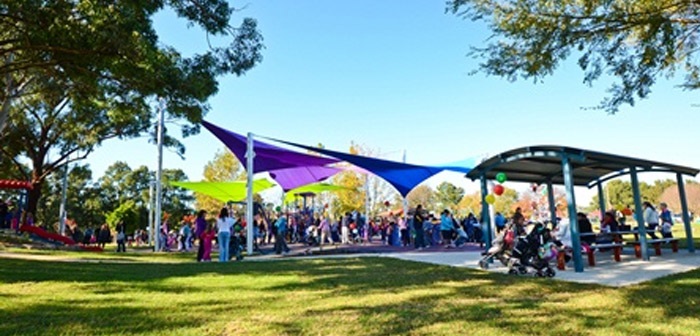Major Sister City Projects
The Japanese Gardens
The Japanese Gardens, located at the Campbelltown Arts Centre, were presented to Campbelltown by the people of Koshigaya on 10 April 1988.
A Japanese garden is a journey, a place for contemplation, with layers of symbols and meanings that represent the seasons of life. The gardens symbolise the beliefs and religion of both Shinto, the indigenous religion of Japan, and Zen Buddhism.
Shinto beliefs are concerned with aspects of the universe and believe that natural objects are the home of spirits. Hence, there is a resulting reverence in Japanese culture for nature.
The Japanese Gardens feature a traditional waterfall, koi pond, timber bridge, contrived stonework, pathway and verdant planting and a tea house. The aim of the garden is to obtain quiet solitude. The design represents an antique look of elegant simplicity, leading to contemplation and heightened awareness.

The Japanese Tea House
As a symbol of friendship between the two cities, 150 Koshigaya residents visited Campbelltown as part of the Australian Bicentennial celebrations in April 1988, and presented a gift of a traditional 16th century style Japanese tea house to Campbelltown. A qualified Japanese builder lived in Campbelltown for three months as the tea house was constructed. It is located in the Japanese Garden of the Campbelltown Arts Centre.
When entering a Japanese tea house, you would traditionally remove your shoes, as the dirt from the outside was not allowed to penetrate the clean inside. As you entered the tea house, a bow would represent your humility and ability to leave your worldy troubles behind.
The development of the Japanese tea ceremony was primarily influenced by Zen Buddhism. The ceremony is the preparation and presentation of matcha (pronounced MA-cha), a powdered green tea. The principles central to a traditional tea ceremony are harmony, respect, purity and tranquillity.

Koshigaya Park, Campbelltown and Campbelltown Park, Koshigaya
Opposite the Campbelltown Arts Centre is Koshigaya Park, is one of Campbelltown's most popular family parkland areas. Within the park are many trees planted by visiting dignitaries, as well as cherry blossom trees. The park is beautifully maintained by Council.
In Koshigaya, Campbelltown Park is also a very popular family location, where there are typical Australian style trees, planted by citizens of Campbelltown. The Campbelltown Forest of Wild Birds is the largest aviary in Japan, which houses Australian birds, wallabies and emus. The head keeper has undergone training in the care of these animals at Taronga Zoo and Australian flora has been established. Regular reports keep Taronga Zoo updated on the condition and successful breeding of the birds and animals.
